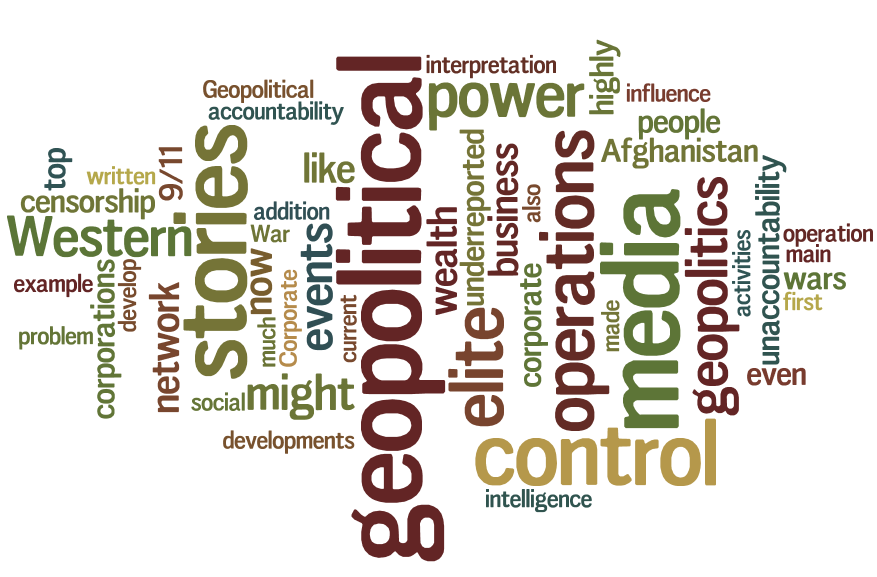Following our study of geopolitics in Geography, one of the key points that emerged for me was how the images of places and spaces can be strategically manipulated in order to advance the interests of certain privileged groups. According to the professor Joanne P. Sharpe, in order get at the root of geopolitics, or the study of the political and strategic significance of geography, it is vital to grasp the concept of critical geopolitics, which understands geography to be a “’discourse’, created by powerful individuals and groups and used as a map or script with which to understand the world.” (Sharp 39). This concept suggests that through a mixture of coercive and non-coercive means, institutions like international corporations, media industries and the state attach concepts and ideologies to places, thus reducing the complex social texture into simplistic packages. In this way, we may come associate the Soviet Union with communism, while we may link the USA to capitalism, freedom, democracy and humanitarianism. These images and the testimonies that often construct them are significant, because, as are products of a specific social and cultural milieu (Whitlock 79), or kairos, they are marked by the political and strategic interests of that period in history.
Yet the scales for observing these image-building processes at work are not just restricted to the national geographic scales; rather, we could argue that they are manifested at the micro-levels, as in the design and layout of various archival documents at UBC’S Rare Books and Special collections, or in the spatial organization of the TRC exhibition at the Museum of Anthropology. For instance, as I hunted for patterns in the Yip Sand Family archives in the Chung Collection for my Archives Analysis, I was struck by the spatial arrangement and organization of Chinese and English characters in the Yip Sang Family’s exercise books. While the characters commonly associated with the English written culture were centralized in the page, Chinese characters were almost invariably scribbled on the outer margins. Given the enormous agency of archives in both shaping a collective memory and in molding cultural identity (Carter 220), such visible forms of marginalization could potentially serve to consolidate not just Western supremacy in written culture, but may also work to naturalize the place of Chinese communities at the periphery of the Canadian society.
Now turning to the TRC exhibition at MOA, the architecture of the exhibition itself is intended to provide comprehensive and fleshed out story of the Residential schools. As such, the exhibition commences at the far end by presenting the intended functions of the residential schools (as seen in speeches by politicians and educators, magnified against photographs of ruined classrooms) then gains momentum as it presents us with individual accounts of experiences at the residential schools, and finally with the series of apologies that have been offered to the Aboriginal communities to date. Each specific section enables voices of diverse groups of individuals to be heard, with the victims being given a central, primary role in the story-telling process. Nevertheless, the audience themselves are not excluded from the process: the table found at the heart of the exhibition gives them the opportunity to be active witnesses, contributing their thoughts to memory books and boxes that may come to form part of the nation’s history and identity.
Carter, Rodney G.S. “Of Things Said and Unsaid: Power, Archival Silences, and Power in Silence”. Archivaria. 61. (2006): 215-233. Web. Jan 10. 2014.
Whitlock, Gillian. “Soft Weapons: Autobiography in Transit”. University of Chicago Press. (2007): 77-80. Web. Feb 5. 2014.

